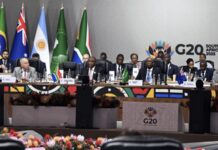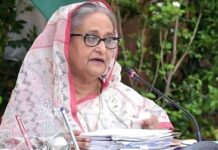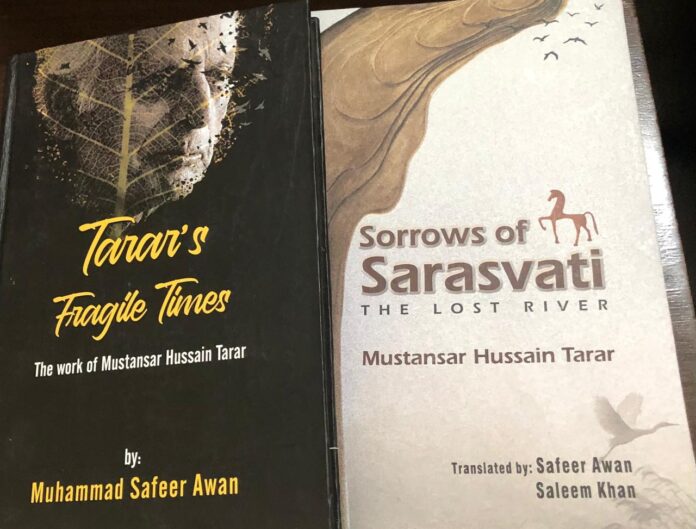1. ‘Sorrows of Sarasvati – The Lost River’ by Mustansar Hussain Tarar
Translators: Safeer Awan – Saleem Khan
2. ‘Tarar’s Fragile Times – The work of Mustansar Hussain Tarar’
by Muhammad Safeer Awan
Mustansar Hussain Tarar is an internationally acclaimed writer from Pakistan. As a
versatile creative genius, he has written novels, travelogues, dramas, short stories, and
columns besides TV hosting, acting, journalism, and tourism.
Dr. Muhammad Safeer Awan, a veteran academic in the domain of English Studies, with
teaching and research as his professional priorities, has lately published two valuable
books on Mustansar Hussain Tarar; the first one is an English translation of Tarar’s ace
novel ‘Bahao’, bearing the title ‘Sorrows of Sarasvati – The Lost River’ that he has
rendered consorting with a fellow academic of English, Dr Saleem (Akhtar) Khan. The
other book ‘Tarar’s Fragile Times’, authored by Muhammad Safeer Awan, is a critique of
Mustansar Hussain Tarar’s work.
‘Sorrows of Sarasvati’
The book is divided into 35 chapters with substantive titles like ‘The lake where birds
come to die’, ‘Parushni and the peacock’, ‘The sails of Sindhu and the great escape’,
‘Stink of a thousand years’ slavery’, ‘Waiting for the floods’, ‘Sarasvati – the mother of
mighty torrents’, ‘Parushni’s well gets thirsty’, ‘The vanishing river’, ‘Trees don’t move;
I’m a tree’, ‘The march of sand’, and ‘Hope is a grain of wheat’.
The original novel in Urdu (1992), carries 229 pages which have been converted into 356 pages of the translated version. Translation of a mythologized narrative laid on exotic lingual speech patterns connected to a euphoric antiquity of nearly 5000 years, is an onerous exercise that the translators have accomplished with a marked Anglophonic elan.
Muhammad Hanif has rightly averred that ‘Tarar is one of those rare breed of writers who
are popular and iconoclastic at the same time.’ Aamer Hussein, that great story teller of
the Pakistani diaspora, thinks that ‘Tarar’s sweeping, ambitious saga of the dawn of
South Asian civilization, which interweaves speculative anthropology and reconstructed
history with the fantasies and myths of the Indus delta, has long been a favourite among
fans of Urdu fiction.’ The translation as he opines, is likely to enable the Anglophone
readers to explore and discover, nay rediscover, the novel.
By the bye, way back in 1992, ‘Bahao’ was launched at a largely attended ceremony in
Faisalabad, hosted by late Yahya Amjad, a famed poet, historicist, and author of a
voluminous but remarkable book, his magnum opus, titled ‘Tareekh-e-Pakistan’, with
Mustansar Hussain Tarar and renowned fiction writer Abdullah Hussein as guests. In
their conversations whereas Abdullah Hussein termed the novel (‘Bahao’) as a
masterpiece of anthropology, Tarar graciously acknowledged Yahya Amjad’s ‘Tareekh’
as a geographical-cum-geophysical source of his novel.
Introducing the novel to the readers, the translators contend that its text is ‘inscribed
with both density and diversity’. According to them, the author has herein created ‘a
living narrative of a dying river’. It depicts ‘the unpredictable turns and cyclic mobilities’
set in an unnamed village on the bank of Ghaghara. The village purportedly isolated from
the civilized civic centres of the times before the Common Era, turns into a ‘synecdoche
(as it were) for the existential continuum and its meandering movement’.
The use of narrative techniques such as the stream of consciousness, intermixing of the third and first person narrators, polyphony, and multilingual interpellations serves to lend it (the novel) a unique structural immensity corresponding to its inherent thematic complexity.
The ‘relative’ coalescence of space and time culminates in an ingenious metamorphosis
of millennia, the maximal measure of time into its minimal fractions and vice versa. As an
impressionistic work of fiction, its canvas embraces the whole ambit of human
civilization. Parushni, Samroo, Pakli, Dorga, Virchan, Puran, Mamon Masa, Dhurva et al
are mythical characters with a protean Ghagharan identity; interestingly they are
archetypes also that typify a moribund human culture with a concurrent renaissance of
man’s inventiveness. Extinction and resurgence are thus made to cycle in repeating
sequences. All said, the translated version of ‘Bahao’ is an intellectual feat intended to
introduce Mustansar Hussain Tarar to the interested Anglophone reader.
‘Tarar’s fragile Times’
Muhammad Safeer Awan’s present work has a dual significance: first, it illustrates the
whole gamut of Tarar’s craftsmanship as a fiction and travelogue writer, and secondly it
is also an insightful critique of his prodigious creativeness. The book comprises some
twelve compendious yet comprehensive chapters highlighting and exploring the inner
and outer world of Tarar, his novel ‘Bahao’ as palimpsest of history, subjects of love and
death, ecosophy and environmental consciousness, traces of global literary art forms in
his fiction, representation of 9/11 trauma in fiction (indigenous, American, and global), a
critical analysis of ‘Raakh’ and a post-modernist review of ‘Khas-o-Khashak Zamanay’,
Tarar’s language innovation and preservation enriching the cultural horizons of Urdu,
Tarar’s fictions of politics and ideological commitment, and Tarar’s cosmopolitanism and
postmodern narrative in ‘Khas-o-Khashak Zamanay’.
In his creative oeuvre, Tarar has ingested the cultural and scenic beauty of Pakistan
alongwith its ‘socio-political inequalities, ideological contradictions, and the agonies and
ecstasies of its masses’. Dr. Safeer Awan has ventured to locate and interpret Tarar’s
literary output with ‘a sense of critical globility’. He rightly thiks that with a view to
understanding Tarar’s ‘ideological and metaphorical constructions’, a reader must needs
be historically and politically conscious of ‘the social constructs’.
‘Fragile Times’ is a random translation of ‘Khas-o-Khashak Zamanay’ that according to
the author, tends to narrativize ‘various traumas that Pakistanis have (had) to live
through since Independence in 1947’. History, mythology, wars, and Partition of India
alongwith many other cultural and textual facts, are generally ‘intertextualized’ in Tarar’s
work. Thus the pervasive but pertinent theme of the human condition forms the generic
trait, so to say, of Tarar’s fictional world, its episodic circumspection notwithstanding.
This accounts for the validity of the concluding authorial asseveration in the book “that
Tarar is the only writer among the Pakistani writers who displays cosmopolitan
consciousness and who is well connected with the spirit of our troubled times”.






















